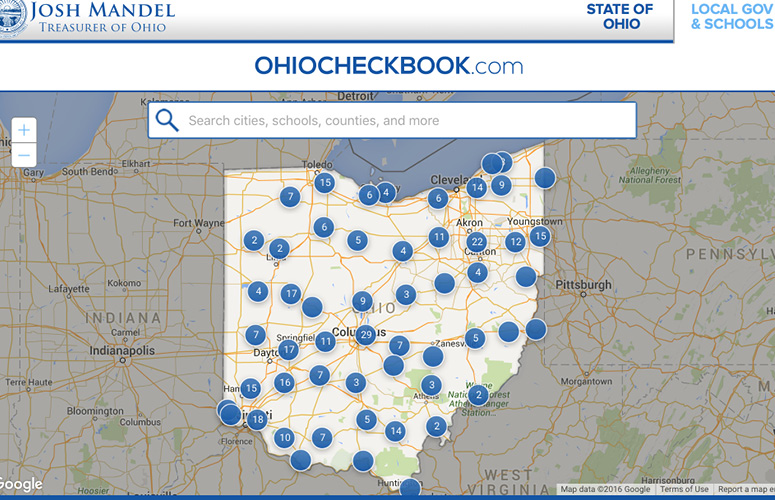Three cheers for Mandel: local government gets more transparent
Sep 24, 2015
Ohio Treasurer Josh Mandel deserves a standing ovation today for announcing that his effort to bring financial transparency to government is expanding to local governments and school boards.
The scope of what Mandel is trying to do — disclose every penny government spends, who gets the money and why — is breathtaking in its scope, audacity and usefulness.
Since December, the Treasurer has made every check written by the state available digitally on OhioCheckbook.com. The site has already been visited by 330,000 taxpayers.
Today, Mandel went broader and deeper. He added “every check written” information on the 114 local governments and school districts who volunteered to be early adopters in this historic transparency effort.
Another 300 local governments have committed to joining the digital effort to disclose every check written. The Treasurer’s Office is in discussions with another 400 local governments to come on board.
This is an impressive start, even though there’s a long ways to go. Ohio has 3,962 local governments: cities, villages, townships, counties, school districts, recreation districts and so on.
The Buckeye Institute is a longtime leader in the fight for governmental financial transparency in government. We created the popular public databases (on this web site) that show government salaries for government employees.
“Buckeye was there ahead of us,” Mandel said in Thursday’s news conference. Without our institute’s work, “this would not have been possible,” he said.
We appreciate the shoutout! The Buckeye Institute cares deeply about financial transparency because we consider ourselves a watchdog and steward for how taxpayer money is spent.
Yet for all we’ve done, Mandel is taking transparency to a whole new level, beyond what any other state has done.
Ohio spent $975,000 to license specialized OpenGov software to handle the complex digital task of integrating data from thousands of sources. It will spend $450,000 to $950,000 to maintain and update the license, depending on the speed at which governments join. This is money well spent.
This OpenGov software does more than make information available on OpenCheckbook.com. It makes the information easy to use — to search, to download, to analyze, to visualize.
The Ohio Newspaper Association is a key supporter of the transparency effort for obvious reasons. These financial records are already public records but, in practice, are so hard and costly to get that it’s hard to keep the public informed.
Mandel, a Republican, got strong support from Ohio Democrats for his transparency effort. Former Treasurer Kevin Boyce, the incumbent Mandel defeated to take office, graciously stood next to Mandel Thursday to offer support.
Mandel is now getting to the hard part of transparency: getting local governments to be open. As a state official, Mandel has the power to make Ohio state government financial data available. But local governments and state universities must volunteer to participate. Mandel’s legal authority is limited to encouraging, cajoling and embarrassing.
Mandel ripped the Ohio Public Employees Retirement System as “antagonistic and not truthful in actions and words” for stonewalling him on financial transparency. He asked OPERS board in June for its support but hasn’t gotten cooperation. “This information belongs to taxpayers and belongs to retirees,” he said in exasperation.
By contrast, Cincinnati, Franklin County, Hamilton County and Mahoning County are among the big governments who’ve gotten on board. (The cities of Columbus, Cleveland and Toledo have not — yet.)
The state’s universities have responded favorably but technical details — such as protecting student and hospital patient privacy — are being worked out before a formal commitment is made.
It will likely be years for taxpayers to have comprehensive financial data on all 3,962 local governments at their fingerprints. But 800 on the way is an impressive start.
We give a thumbs up to the local governments leading the way. Already, 114 are providing “every dollar spent” data to OhioCheckbook.com.
It’s a thing of beauty to tap a keyboard and instantly see how much the city of Delaware spent to heat its fire stations in December. Maybe next year taxpayers and city officials will find a way to get more heat for less money.
